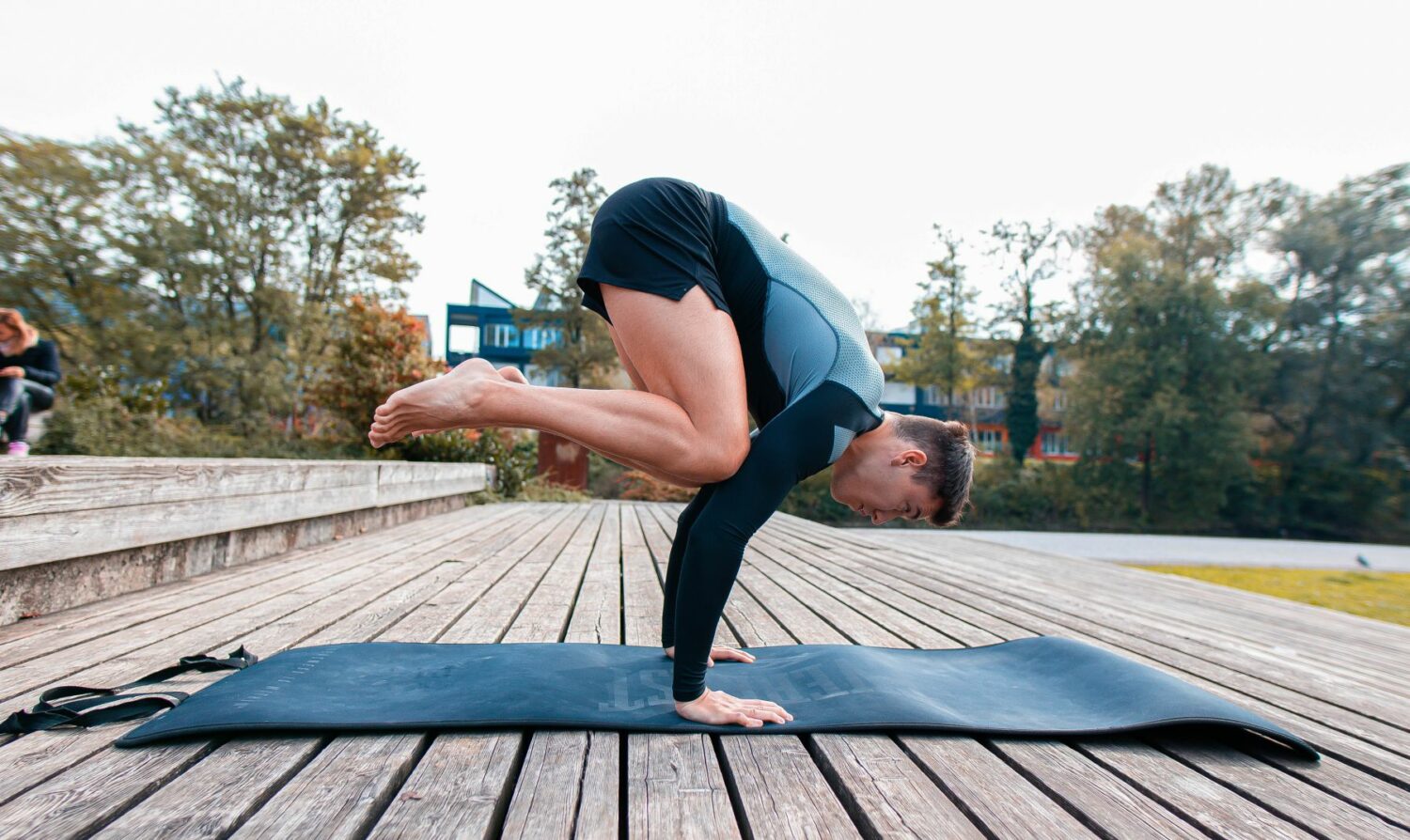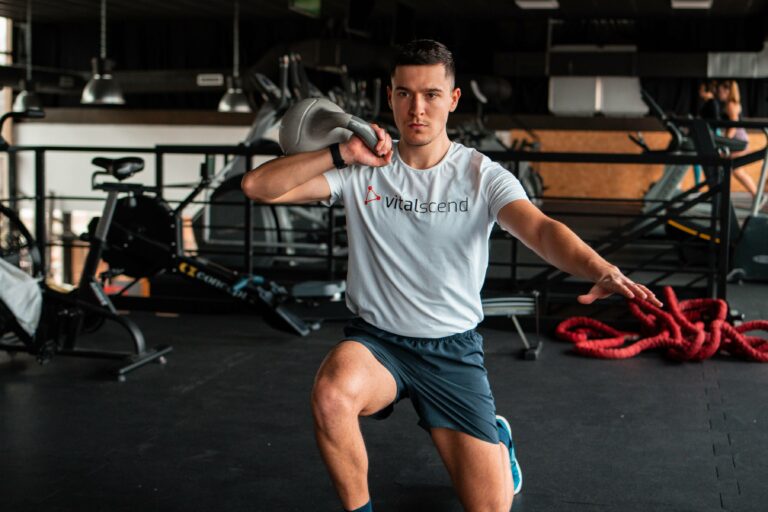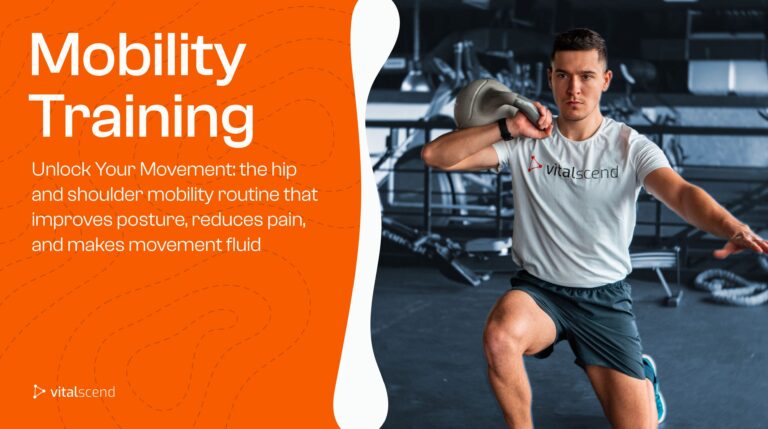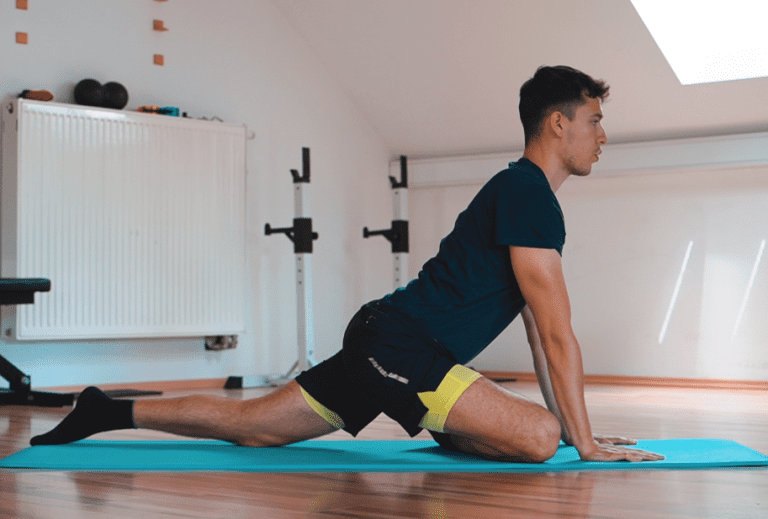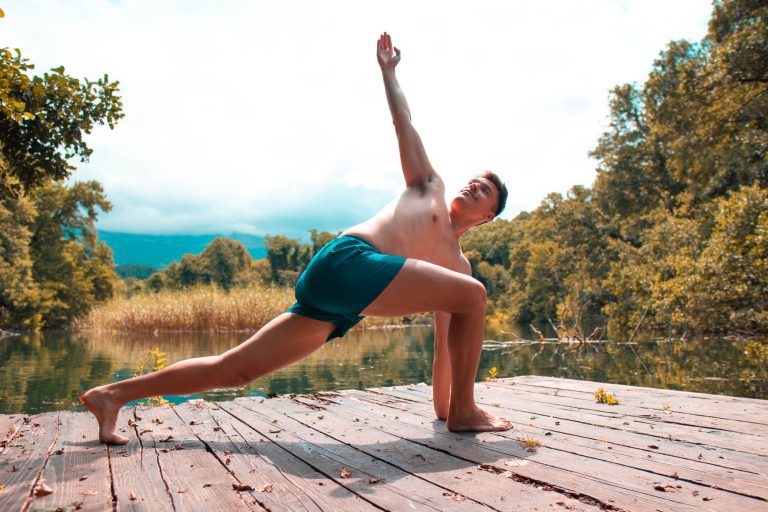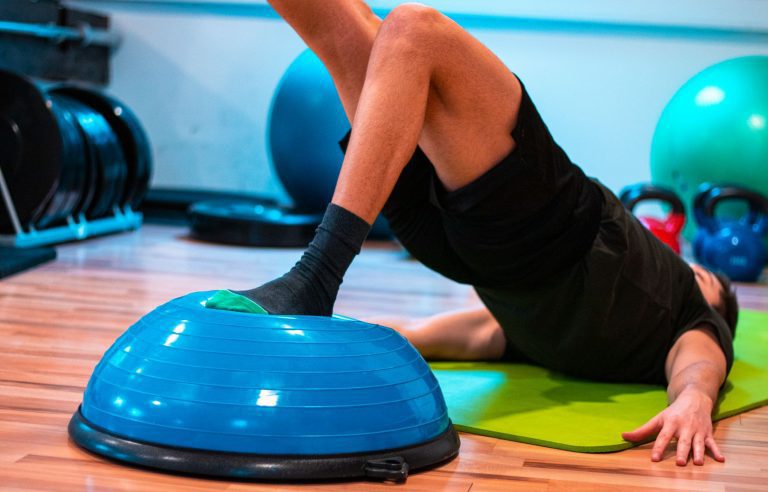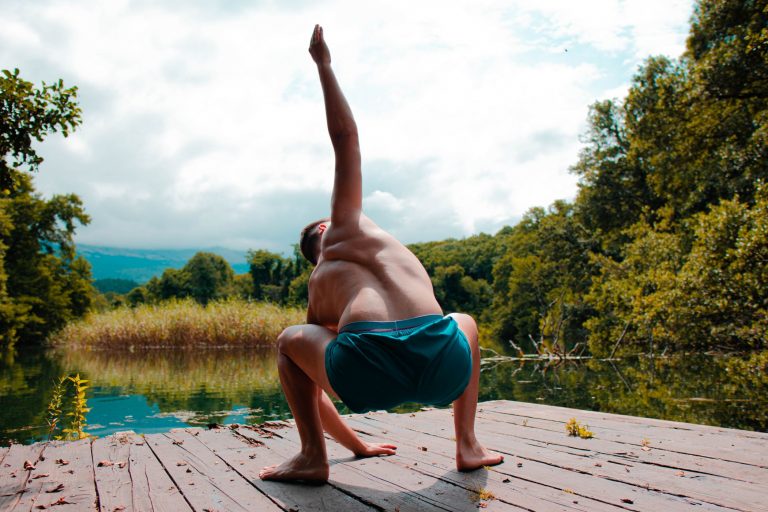Power Yoga for Strength, Balance, and Physical Fitness
Yoga training involves many balancing poses, whether you are interested in single-leg stands, arm balancing, or core work, it offers quite a wide variety of poses. Muscle coactivation in balance poses is the main weapon of power yoga for strength.
Yoga has many positive effects on strength and balance, without us realizing it during training. Many athletes lack some of the specific mobility, balance, and flexibility in their key points, which can further increase performance.
Many elderly people lack basic movement patterns, live through pain, and have weaker musculoskeletal system. All of this can be reversed through yoga, and you don’t have to lift heavy weights around.
Yoga is a very versatile practice, offering many different styles which can improve your physical fitness. Certain yogic styles can fit greatly with one’s strength progression and build a strong and toned physique.
Strength and Balance improving yoga styles are Power and Ashtanga Yoga, which are more strength-work dominant dynamic yoga styles that use many bodyweight exercises through sequences with the efficient transition.
But, can yoga be a functional fitness alternative? Is it that strength and balance enhancing?
Definition: Strength, Muscular Endurance, Balance, Physical Fitness, Power
However similar it sounds, strength, power, and balance are very different. All these strength-related physical abilities have something in common, but can be different in nature.
Strength
Power
Balance
Muscular Endurance
Strength is the muscle’s ability to produce force or withstand pressure. It is the ability to push through, lift something up or hold a certain amount of weight in a hard position, isometrically. There are many different types of strength, but to keep it short, think of it as the force you can produce.
Power, in yogic terms, is related to the chi-energy, the heat-building properties of yoga. Power is closely related to energy and a strong core, but in fitness term, it is something different. Power means the ability to produce a certain amount of force in a shorter duration, so it includes time in the equation. More explosive people are known to be more powerful.
Balance on the other hand, refers to our ability to compensate for movement so that we are in balance. To remain steady and strong, distribute our weight evenly. In yogic terms, balance is not just used in balancing poses physically, but also as a chakra balance, energy balance, and hormonal balance thought to balance out the Yin and Yang energies.
Muscular Endurance is the ability of a muscle to perform for a longer duration of time. To produce force during repetitive contractions, for as long as it can. Muscular endurance has a lot more to do with glycolysis and aerobic lipolysis rather than phosphate energy systems.
In yoga, we can mainly influence our strength, balance, and muscular endurance of specific muscles – not power and explosiveness.
Holding Poses for Muscle Endurance & Strength
Many of the yogic poses enforce muscular endurance in us, without us realizing it. Think of any yoga session and how many times you pushed from downward dog through vinyasa to cobra, around 30 times per class. That is tremendous work for your shoulders, core, chest, and back.
Aside from this, many arm balancing and one-legged poses will improve your vestibular balance and intramuscular coordination which can prevent falls, improve neuroplasticity and enhance overall balance.
Toning your body, losing some weight, increasing muscular strength and endurance, balance improvements, and core toning are just some of the benefits that yoga practice can offer to improve physical fitness.
Not to mention that when we deepen our breath, sweat a lot, and put our minds in a meditative state, we have a bunch of other positive effects of mood, heart and brain health, and full body detox.
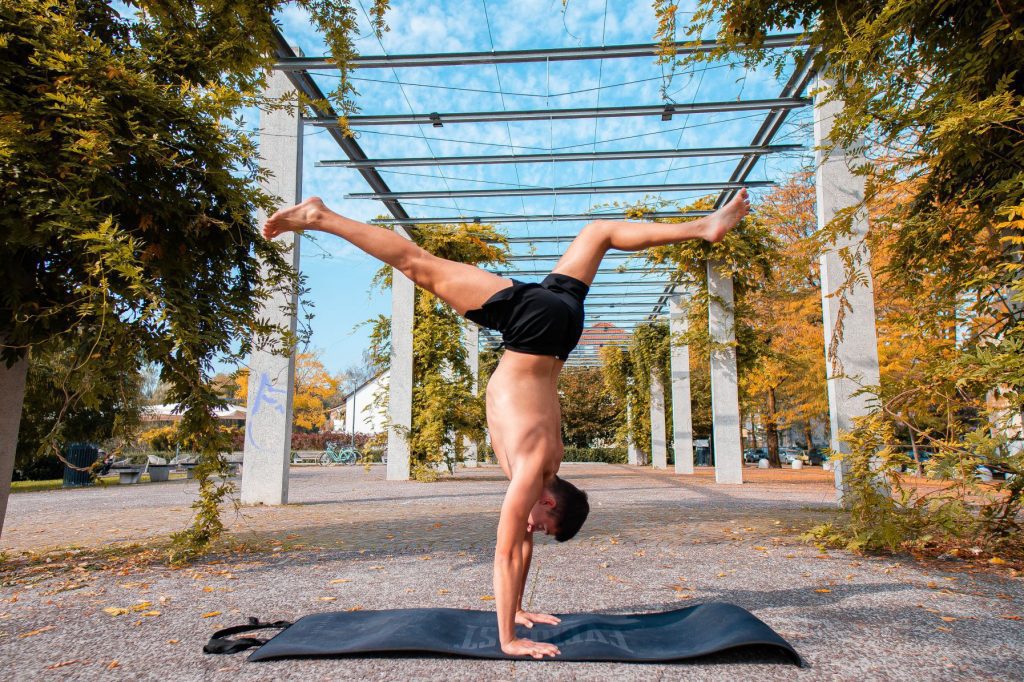
Yoga Effects on Physical Fitness, Balance, and Strength
As a physical practice yoga comes with many potential benefits for our musculoskeletal system. Many of these abilities like strength and balance, or muscular endurance have a lot to do with our vestibular system, neuromuscular control, energetic physiology, and many more.
Here are a couple of Evidence-Based facts on yoga in relation to balance, strength, and physical fitness:
- Improvements in overall Physical fitness
- Increased Range of Motion and Joint Mobility
- Significant Improvements in Agility, Coordination, and Balance
- Improved Balance, Singe Leg Standing Poses
- Improved Cardiovascular performance and Endurance
- Improved Muscular Strength and Muscular Endurance
- Longer duration of withstanding Balancing Poses
- Improved Upper Limb and Abdominal Strength
- Improved Quality of Life
- Reduced Incidence of Falls
- Improved Stride Speed, Physical Confidence, and Legs Flexibility
These are the main improvements seen throughout those studies, shown in the sections below. Of course, there are many other benefits regarding yogic training and physical performance, but those are the main evidence-based ones.
From abdominal core strength, which is crucial for shoulder and hip mobility and muscular endurance, yoga training is worth pursuing if you want to improve your health and fitness.
Physical Fitness & Yoga
There are many studies on the effects of yoga on physical fitness, and the collected data shows very promising evidence of the positive effects of yoga.
Physical fitness is defined as health and well-being, the ability of an individual to perform a given physical task. Now, it’s safe to say there are many levels of physical fitness, and if the top athletes are at the peak of it, normal non-athlete humans have certain measures they should live up to.
Depending on age, health, and preoccupation – these measures vary a lot. But, if one can achieve the basic physical tasks and function properly throughout his daily activities without getting too tired or feeling pain, he is considered physically healthy.
So physical fitness has a lot to do with sports performance abilities like strength, aerobic endurance, balance, coordination, speed and many more.
Research: Yoga on Physical Fitness – Strength, Power, Speed
- Hatha yoga was introduced to 15 active participants involved in this study for 8 weeks. The training consisted of 10 min. pranayama, 15 min. dynamic warm-ups, 50 min. asanas and 5-minute supine relaxation in the sauna. The subjects who did yoga had significant improvements in agility, strength, power, and speed, in comparison to the other 15 in the control group. This may further improve well-being and health. (1)
- Bikram yoga was also explored for its effects on physical fitness. In this study, 10 active participants underwent a 90-minute daily Bikram Yoga session under standardized supervised postures, in the right heat and humidity. Yoga practitioners gained deadlift strength, improved lower back and hamstring flexibility, shoulder flexibility, and reduced body fat. While handgrip strength and cardiovascular measures stayed the same, the short-term yoga protocol had many positive musculoskeletal fitness effects. (2)
Yoga Effects on Strength and Endurance
Yoga can also positively influence strength and muscular endurance, here are a couple of studies showing these findings:
- Hatha Yoga (12 weeks, 173 individuals) – leads to improvement of cardiorespiratory endurance, muscular strength, and endurance. VO2max was increased, and practitioners showed better results on curl-up and push-up tests and hamstring flexibility. (3)
- Hatha Yoga (8 weeks) – improved participant’s flexibility by 13-35%. On average, participants were able to perform 14 more curl-ups and 6 more push-ups. The balance time in the specific pose improved for 17 seconds, plus leg and ankle strengthening was on point. (4)
- Yoga’s (6 weeks, 18 sessions, 3 weekly) static and isometric contractions can improve muscle endurance. It lead to the greater upper limb and abdominal strength which resulted in better sit-up and push-up scores. (5)
- When female hockey players were following an 8-week yoga protocol, they improved many aspects of physical fitness. Improvements were seen in muscular strength, endurance, flexibility, and agility. This provides good enough evidence for how yoga can help athletes to improve their sports performance. (6)
Yoga on Balance and Mobility
Balance and mobility are one of the most important assets of physical health and fitness, not just to prevent injuries but also to live a better, more active lifestyle. People with greater balance have better neuromuscular coordination and control, and people with better mobility can access specific poses, improve sports performance and ease movement.
Here are a couple of evidence-based data on yoga in relation to balance and mobility.
- Systematic reviews and meta-analyses provide good evidence of yoga’s effects on preventing falls in people over 60 years. For many, this may be crucial to avoid musculoskeletal injuries. It turns out that in a total of 307 participants reviewed, yoga had a small effect on balance performance and a medium effect on physical mobility. (7)
Falls are pretty serious for older people since they might cause injury or disability. Active individuals have a lower risk of falls and overall potential injury, simply because their cartilage, bones, muscles, and joints are more nourished, strong, and flexible at the same time.
- Yoga and Tai Chi practice can reduce pain and the number of falls, as well as improve balance function and quality of life. (8) There’s a correlation between yoga and balance. (9)
- Yoga’s also a great tool for improving mobility and joint flexibility (10)
- In women over 65 years, yoga may reduce fall incidence. It improved stride speed, overall physical confidence, leg flexibility, and one-leg stance balance. (11)
Power Yoga Special
One of the most unique styles of yoga that focuses on building strength and balance is Power Yoga. As a branch of Ashtanga yoga, Power yoga focuses on many balancing poses, isometric contractions, and transitions which will make you work hard and sweat.
The point of ashtanga yoga is to tap into your personal power, both physically and mentally. A very popular style of yoga that involves purification of your mind and body.
Since ashtanga yoga is more of a strict and static set of sequences and poses, power yoga uses most of the ashtanga’s poses and exercises, and has a similar goal in mind but is allowed to be manipulated and changed, just as Vinyasa Flow.
This, therefore, allows different people to access a great yoga practice that will strengthen the core, shoulders, back, and legs, through a series of movements and asanas. The versatility and adaptability are what make this style unique for strength building.
It is important to mention that power yoga is for those who are more athletic, active, and strong, rather than elderly amateurs. This class has loud music, balancing poses, sweaty transitions, and a hot environment.
Research Limitations
*Studies have some limitations, important to evaluate the validity of their results. Here’s a highlight of some and NOT ALL studies (and limitations), shown in this article, for context.
Studies with small to moderate sample sizes are
hard to generalize.- Studies that only include one gender (male or female)
- Studies with short duration *8-12 weeks exaggerate effects in non-trained individuals
- Limited research to healthy and young adults *not-applicable in older individuals with health conditions.
- In need of long-term, systematic studies regarding future practical applications
- Lack of randomization and reduced comparability.
- Lack of control on external factors *motivation, nutrition, sleep, home practice.
- Different frequencies for different intervention studies.
Moderate methodology limitations in young school boys.
Some studies did not list the specific poses or asanas used.
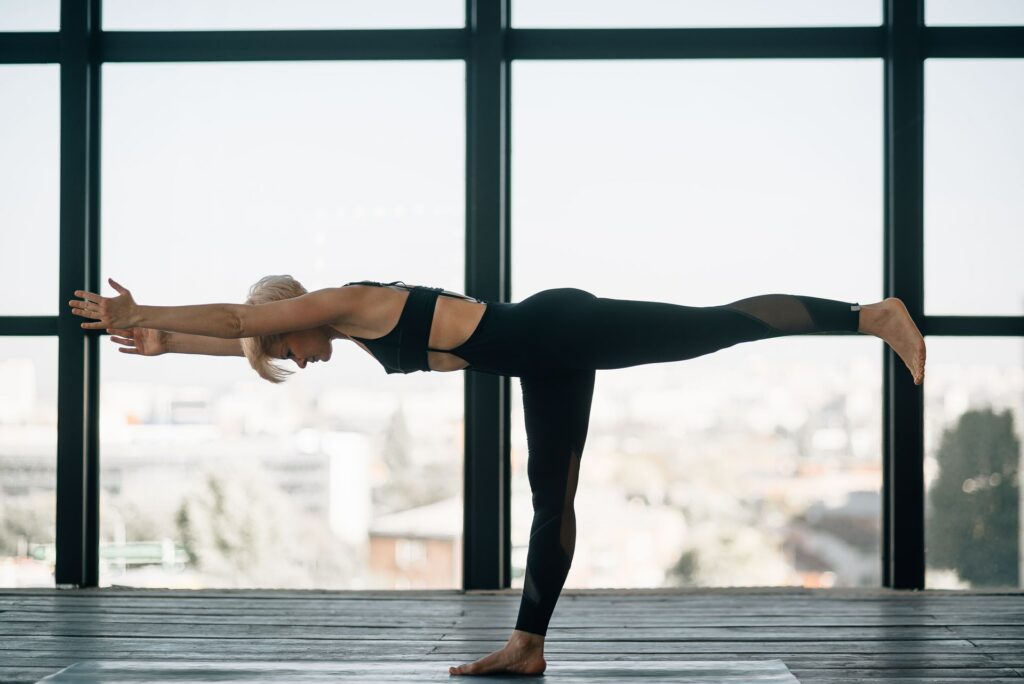
Best Balance and Strength Building Yoga poses
Ashtanga yoga incorporates the Surya Namaskara sequence, which involves fall down, warrior, downward facing dog, cobra, chair pose, prayer pose, and raised arms pose.
To many, this seems very easy, but after a couple of transitions, our shoulders and core have worked pretty well to sustain this transition smoothly. If we continue with extra balancing arm work, it is a pretty good shoulder, chest, triceps, and even back workout.
Here are a couple of Ashtanga or Power Yoga poses, best for building unilateral and bilateral balance, core and shoulder strength, and full body stability.
- Tadasana – Mountain Pose can work your quads, glutes, and adductors if you can contract and push your pelvis forward consciously. Activating the right muscles will even work lower abdominal and shoulder retractors.
- Utkatasana – Chair pose, with your hand above your head, this exercise can strengthen and lengthen both neck and back muscles, improve posture and activate your glutes and quadriceps muscles.
- Vrksasana – The tree pose builds unilateral strength and balance, since you put all your weight on one leg, having the other foot rest on your standing leg. From here you can lower to activate more quadriceps and gluteus muscles.
- Utthita Hasta Padangustasana – Extended Hand to big toe Pose can definitely make you sweat. A lot harder than it might look, works your whole body, all the stabilizers are involved and it depends a lot on our hamstring flexibility.
- Bakasana – Crow pose is one of the easier arm balancing poses. As you progress you push the knees up higher on your triceps and shift your weight forward until you fly. This works your shoulders as well as other push motion muscles such as the chest and triceps, but also a lot of core is involved.
- Pinchamayurasana – The forearm stand is more of an advanced level pose, where you hold your body as in a handstand, it’s just that you stand on your forearms. This works your shoulders and core pretty efficiently.
- Adho Mukha Vrksasana – Handstand is one of the basic, but still, pretty challenging balancing poses which involve full body activation if done properly. Yeah, even your legs are involved in a proper handstand. Mostly hip flexors, abdominals, inner thighs, lower back, and shoulders are activated during a handstand.
- Garudasana – Eagle Pose is one of the fanciest ancient exercises done by twisting and wrapping your arms and legs around and reaching up. This activates shoulder and back muscles, but is also a pretty good balancer for the standing leg and involves our core.
- Anjaneyasana – High lunge is also one of the easier balancing poses to do, since we can separate our feet to be more stable. However easy it seems, it requires quite a good work of your inner thighs and core to keep it smooth and non-jiggly.
- Virabhadrasana I, II and III are Warrior I, II, and III poses that are great and an easy way to work the legs, especially the quadriceps and glutes, and also involve our core and shoulder, especially in longer duration of this exercise.
- Utkata Konasana – Goddess pose is also a good strength builder. It involves all of our leg muscles, including the adductors, abductors, hamstring, glutes, and quads. For those lifting on their toes, it activates the calves too.
- Natarajasana – Dancer Pose is one of the fanciest aesthetically pleasing poses in yoga. It involves single-leg balancing while you pull the other leg from behind, working all the muscles of your standing leg but also your core, lower and upper back.
- Ardha Chandrasana – Half Moon pose is one of the best side torso stretching poses. It also involves single-leg balancing, light twists, core work, and arms spread. One of the best single-leg balancers, suitable even for amateurs with the usage of block for hand support.
conclusion
Power and Ashtanga Yoga are one of the best styles to build strength and balance. Yoga as a unique style of body-mind practice incorporates different levels of balance work, including your vestibular balance & focus, rather than just neuromuscular coordination. Yoga has been proven effective for balance, strength, mobility, and physical fitness in many studies. This may further reduce the incidence of falls and improve the overall quality of life and physical confidence. Yoga incorporates many balancing exercises from single leg stands to arm balancing, that mostly strengthen core, shoulders, and leg muscles.

